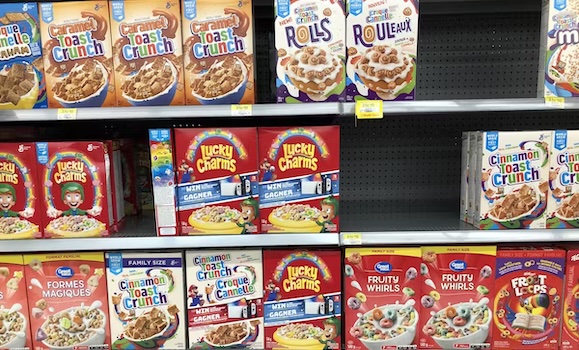About the author: ╠²is a Professor of Health Promotion; Scientific Director of the Healthy Populations Institute at╠²╠²▓╣▓į╗Õ╠²╠²is a╠²Canada Research Chair in Healthy Food Policy, Assistant Professor in Nutrition at the╠².
╠²
Healthy eating sounds deceptively simple ŌĆö just eat more fruits and vegetables and avoid junk food, right? However, healthy eating really isnŌĆÖt easy.
illustrates how ubiquitous unhealthy foods are, how aggressively they are promoted and how hard it is to access healthy foods in places we spend our time.
We are part of a team of 18 nutrition and food policy experts from across Canada who looked at research from the past five years to expose the environmental factors that influence what people in Canada buy and eat. We explored many different factors, like the quality of food, food marketing practices and what foods are available in places like hospitals, schools and grocery stores.
The report is part of an international network called (International Network for Food and Obesity/Non-communicable Diseases (NCDs) Research, Monitoring and Action Support). Our findings reinforce that, from homes to hospitals, CanadaŌĆÖs food supply needs reform.
What we see is what we get
╠²╠²
Unhealthy food is everywhere, and that makes it hard to avoid: what we see is what we get. Our report found that most packaged foods in grocery stores are unhealthy. In fact, two-thirds of them were high in salt, sugar or saturated fat. Only 12 per cent were low in these nutrients.

Breakfast cereals often use marketing techniques that made products look fun or cool, or cartoon characters and celebrities, to entice young consumers.╠²THE CANADIAN PRESS/Richard Buchan
Unhealthy foods are readily available for purchase. One study showed that children in Ottawa had, on average, 19 places to purchase foods within one kilometre of their school. In Vancouver, that number was as high as 45.
In-store environments also thwart healthy purchases: of candy, snacks and sugary drinks, tempting consumers at the checkout, while only around one in five stores operated a junk-free checkout. And nearly all hospital cafeterias and recreation centre vending machines sold sugary drinks.
Unhealthy foods are also heavily marketed, particularly to children. estimated that children aged six to 11 see more than 4,000 food ads on their digital devices each year, while older children see twice that number. Around 90 per cent of the ads that children saw on their dig

